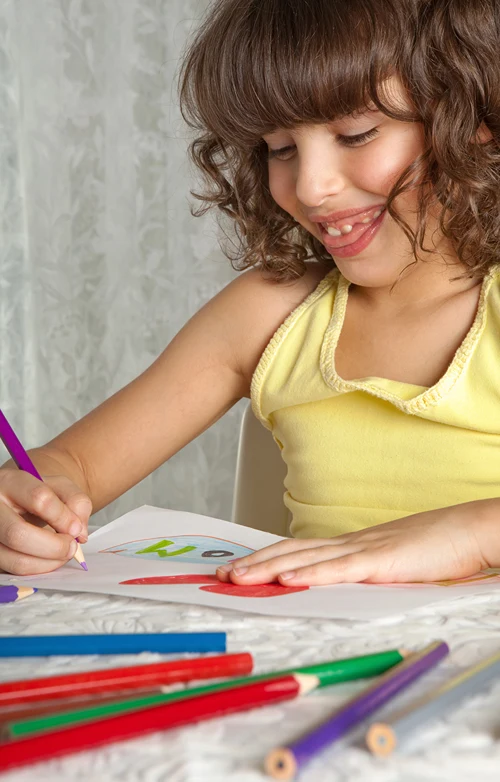Butterfly Coloring Pages for Kids: A Creative and Educational Adventure
Coloring is one of the most enjoyable and educational activities for children. It offers them a creative outlet while simultaneously developing essential motor and cognitive skills. Among the wide range of themes available for coloring pages, butterflies stand out as a favorite choice for kids of all ages.
With their bright colors, delicate wings, and symmetrical designs, butterflies not only captivate the imagination but also serve as an excellent educational tool.
Come explore why butterfly coloring pages are a valuable resource for parents, teachers, and caregivers, and how they can be used to inspire creativity, learning, and fun.
Why Butterflies?
Butterflies are more than just beautiful insects. They symbolize transformation, nature, and diversity. Their fascinating life cycle—from egg to caterpillar, chrysalis, and finally a butterfly—provides a natural gateway into discussions about science and biology. Additionally, the incredible variety of colors and patterns on their wings makes them a perfect subject for artistic expression.
For kids, butterflies are appealing because they are familiar, friendly, and often associated with gardens, flowers, and sunny days. This positive imagery helps create a comforting and cheerful atmosphere when coloring.
Benefits of Butterfly Coloring Pages
-
Enhances Fine Motor Skills
Coloring within the lines of butterfly wings helps children develop hand-eye coordination and fine motor control. These skills are crucial as they support handwriting, cutting, and other tasks that require precision.
-
Promotes Creativity and Self-Expression
With butterfly coloring pages, there’s no right or wrong way to color. Children can experiment with different color combinations, patterns, and even textures. This freedom promotes creativity and allows kids to express their personality through art.
-
Supports Learning and Development
Coloring butterflies can be an educational activity as well. Parents and educators can integrate lessons about:
- The Butterfly Life Cycle – Using themed coloring pages to explain metamorphosis.
- Science and Nature – Teaching children about different butterfly species and their habitats.
- Symmetry and Patterns – Encouraging kids to create symmetrical designs, which supports early math skills.
-
Encourages Relaxation and Focus
Coloring is a calming activity that can help reduce stress and anxiety in children. It encourages mindfulness and can improve concentration as kids focus on completing a task.
-
Easy and Accessible
Butterfly coloring pages are easy to access, often free online, and require minimal materials—just crayons, markers, or colored pencils. This makes them an excellent go-to activity for both home and classroom settings.
Types of Butterfly Coloring Pages
To cater to different age groups and skill levels, there are various types of butterfly coloring pages available:
-
Simple Butterfly Outlines
Perfect for toddlers and preschoolers, these pages feature large, uncomplicated shapes. They help young children stay within the lines and explore basic colors.
-
Detailed Butterfly Designs
For older children, detailed butterfly illustrations with intricate patterns offer a more challenging and engaging activity. These are excellent for developing fine motor precision and patience.
-
Educational Butterfly Worksheets
Some coloring pages double as worksheets, including facts about butterflies, labeling exercises, or even word searches related to butterfly anatomy and lifecycle.
-
Themed Scenes
These pages include butterflies in different environments—gardens, meadows, or alongside flowers and other insects. They help expand a child’s understanding of ecosystems and nature.
-
Interactive Coloring Pages
Some printable coloring pages include prompts, such as “Color this butterfly to match the Monarch species,” or “Create your own butterfly species with unique wing designs.” These prompts stimulate critical thinking and imagination.
How to Use Butterfly Coloring Pages Creatively
-
Create a Butterfly Art Wall
Encourage children to color different butterfly designs and display them on a wall or bulletin board. This can be turned into a seasonal project, like a “Spring Butterfly Garden.”
-
Incorporate in Storytelling
Have children color a butterfly and then write or tell a story about where it goes, what it sees, and who it meets. This combines art with literacy development.
-
Science Fair or Classroom Projects
Use butterfly coloring pages as part of a presentation on the butterfly life cycle or biodiversity. Children can color each stage of metamorphosis and label them accordingly.
-
DIY Butterfly Mobile
After coloring several butterflies, cut them out and hang them from strings to create a mobile. This is a fun craft that also serves as room decor.
-
Holiday-Themed Butterflies
Incorporate holiday or seasonal themes—like Valentine’s Day butterflies with heart-shaped wings or winter butterflies with snowflake patterns. This keeps the activity fresh and relevant throughout the year.
Digital vs. Printable Coloring Pages
With technology becoming increasingly integrated into children’s lives, many coloring pages are now available in digital formats. Kids can color butterflies on tablets using styluses or their fingers. However, traditional printable coloring pages still hold a special place because they:
- Allow children to practice pencil grip and control.
- Don’t require screen time.
- Can be used anywhere without the need for devices or electricity.
Depending on your needs, both formats offer value, and a combination of the two can provide variety and keep kids engaged.
Where to Find Butterfly Coloring Pages
Many websites offer free or affordable butterfly coloring pages. Here are some reliable sources:
- Educational Websites – Sites like Scholastic, Education.com, and Teachers Pay Teachers often have themed coloring sheets and activity packs.
- Craft Blogs – Many parenting and craft blogs share beautifully designed free printables.
- Online Coloring Books – Many coloring websites offer large libraries of butterfly pages.
- Pinterest – A treasure trove of creative coloring page ideas and printables.
- Library and Classroom Resources – Teachers often share printables through classroom blogs or local community centers.
Tips for Parents and Educators
- Provide a Variety of Coloring Tools – Crayons, gel pens, watercolors, and colored pencils can offer different textures and experiences.
- Discuss Colors and Patterns – Talk about real butterfly species like the Monarch or Blue Morpho, and how they get their colors.
- Pair with Books – Read butterfly-themed children’s books such as The Very Hungry Caterpillar or Waiting for Wings to enrich the activity.
- Use as a Reward Activity – Butterfly coloring can be a great reward for finishing homework or chores.
Conclusion
Butterfly coloring pages offer more than just entertainment. They are a bridge between art, science, and imagination. Whether you’re looking to keep kids busy on a rainy afternoon or incorporate an educational theme into a lesson plan, these pages are a wonderful resource. They promote fine motor development, encourage creativity, and open up conversations about nature and biology—all while being fun and accessible.
So grab some crayons, print out a few butterfly templates, and watch your child’s imagination take flight!





